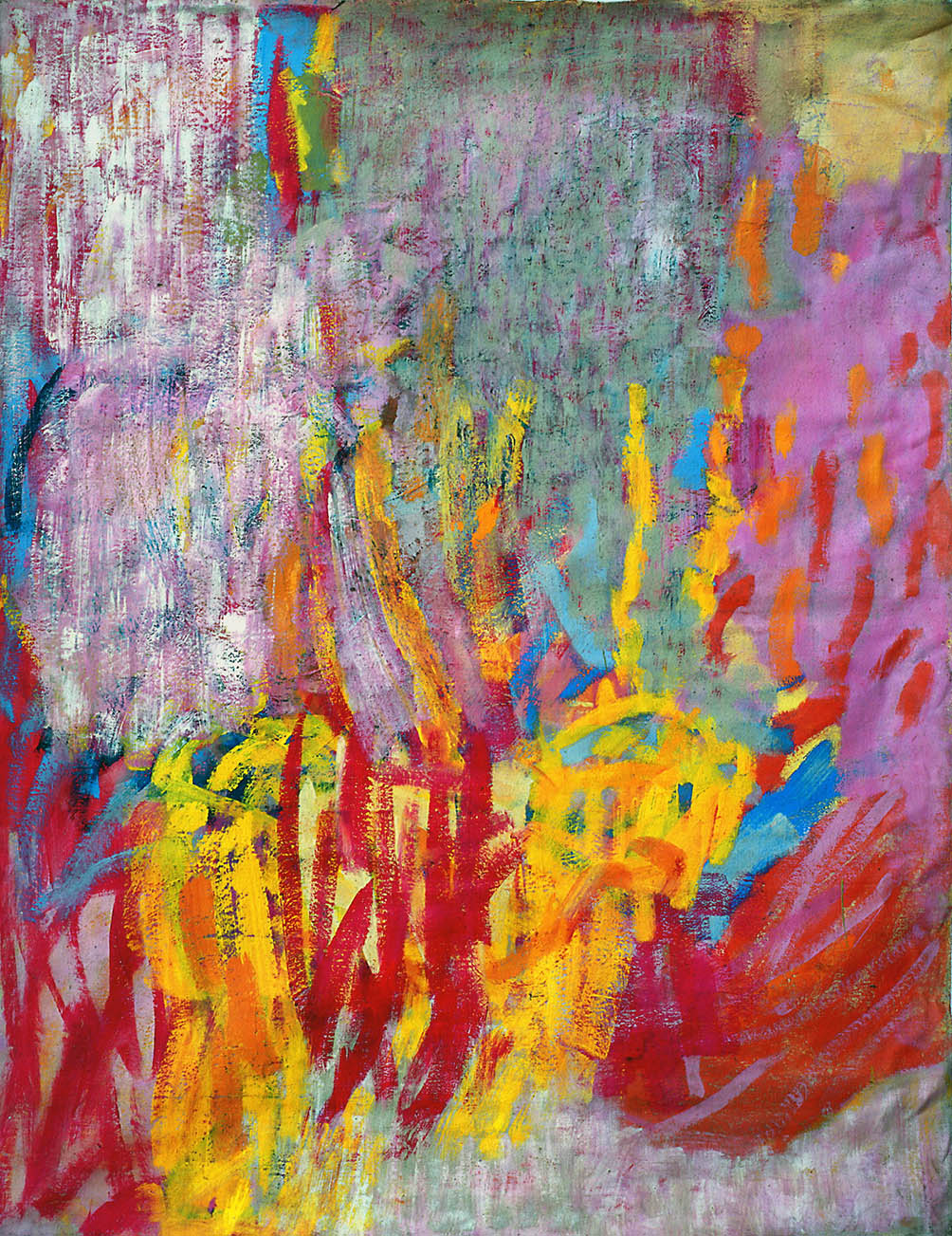
1946, Sarajevo, Bosnia and Hercegovina – 2013, Sarajevo, Bosnia and Hercegovina
In the Garden, 1983
Acrylic on canvas, 180 x 142 cm
Acquisition: Purchased
Reference: 04813
Biography
Radoslav Tadić was of an age to witness the founding of the Sarajevo Art Academy, to be one of its first students, and later, after time spent pursuing doctoral studies in Ljubljana, to become one of its most prominent tutors and administrators. In the 1980s, Tadić’s career showed the agility and adaptability that is the trademark of all Sarajevo artists; moving with ease between the life of the academy, the art politics and administration of ULUBIH, and the artist-run manifestations of Yugoslav Dokumenta in 1987 and 1989. All this, alongside a growing exhibiting profile both within and beyond the borders of the former Yugoslavia. But this summary of the artist’s main achievements tends to focus attention away from the foundations of his prominent position- an uncompromising and ceaselessly inventive practice. Having initially had a background in medicine, Tadić turned to art on the foundation of the academy in Sarajevo in 1972. His early self portrait above shows an already very assured grasp of colour and composition; the livid green background gives his face a ghostly and impermanent presence, almost as though he is inviting the viewer to consider *how* the image has been painted, rather than the features of the person who created it.
In the early 1980s Tadić became fully immersed in the mechanics, poetics and structure of painting, a process which perhaps can best be seen in his series of paintings entitled In the Garden. Vlastimir Kusik, writing in the catalogue for Yugoslav Dokumenta ’87, perhaps summed up these fundamental re-evaluations the best: “For Radoslav Tadić, the vocation of a painter is a pre-requiste for any artistic attitude and choice. Even when he became distrustful of painting, he still painted, because this was the only way of his expression. Painting as act was analytical in process and primary in treatment. The result was a painting as a recording of an attitude which annuled the painting itself…It annuled the skill of painting, reducing it to a primary activity.” In this sense, then, paintings such as In the Garden, a mosaic of coolly thought-through pointillism and vigorous, quickly applied primary blocks of colour, can be read as a mosaic of attitudes during the work’s composition, as much as a statement of aesthetic intent. Towards the end of the 1980s Tadić’s critical reflections on painting led him into a series of sculptural works, which, much like his painting of the time, were a means of analysing and deconstructing the processes of making, in order to discover more about the nature of the art-object. This expanded practice was on display prominently at the Yugoslav Dokumenta show of 1989; alongside an acrylic painting, Tadić made the witty outline of a window frame on the floor, holding up the previously unexamined random cracks and imperfections in the tiles to the “aesthetic scrutiny” of the visitor; turning, in a subtle way, the gallery visitors process of evaluation and analytical experience against themselves.
Tadić continued to make work and exhibit as he could during the siege of Sarajevo, and attend to the work of the students who were left at the Academy. The maps works he made during this period, subsequently, were exhibited all over the world and identified Tadić as one of wartime Sarajevo’s most prominent cultural figures. In the last decade of his life, he continued to maintain a significant international exhibiting profile and was regularly shown in Sarajevo’s exhibiting spaces, particularly Collegium Artisticum.
Source from: – Sarajevo Culture Bureau https://sarajlijacult.wordpress.com/2013/